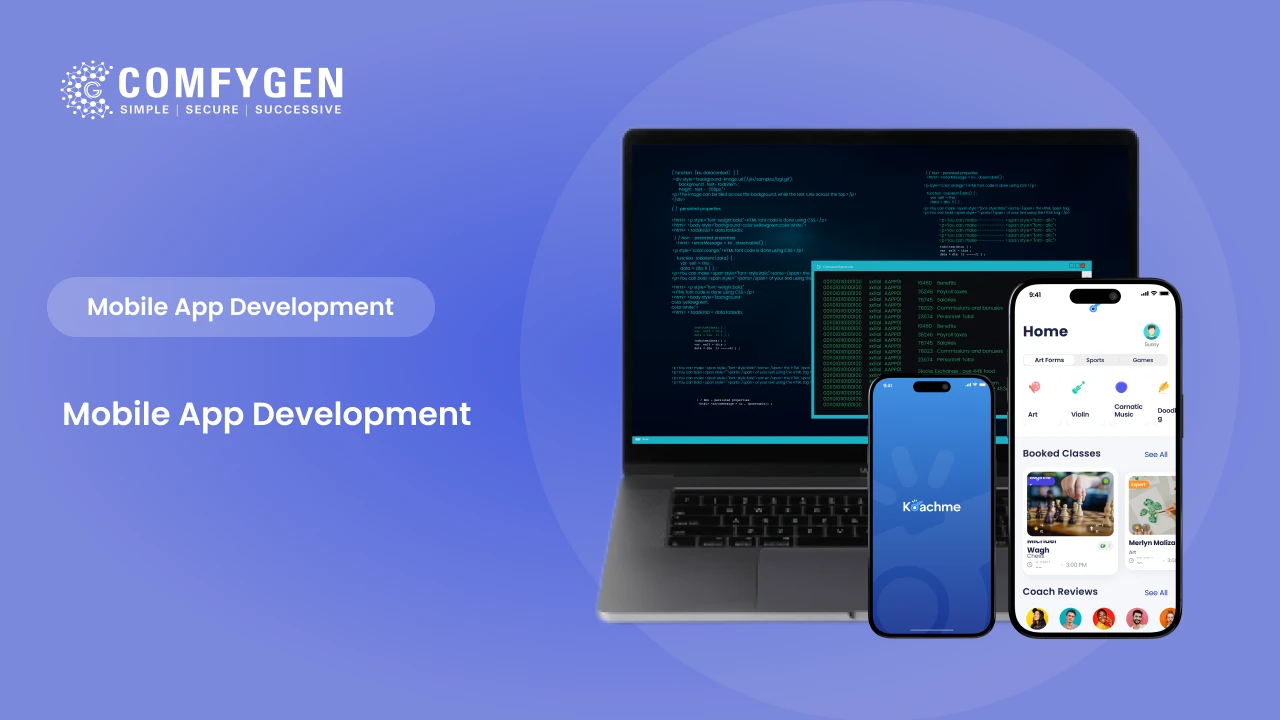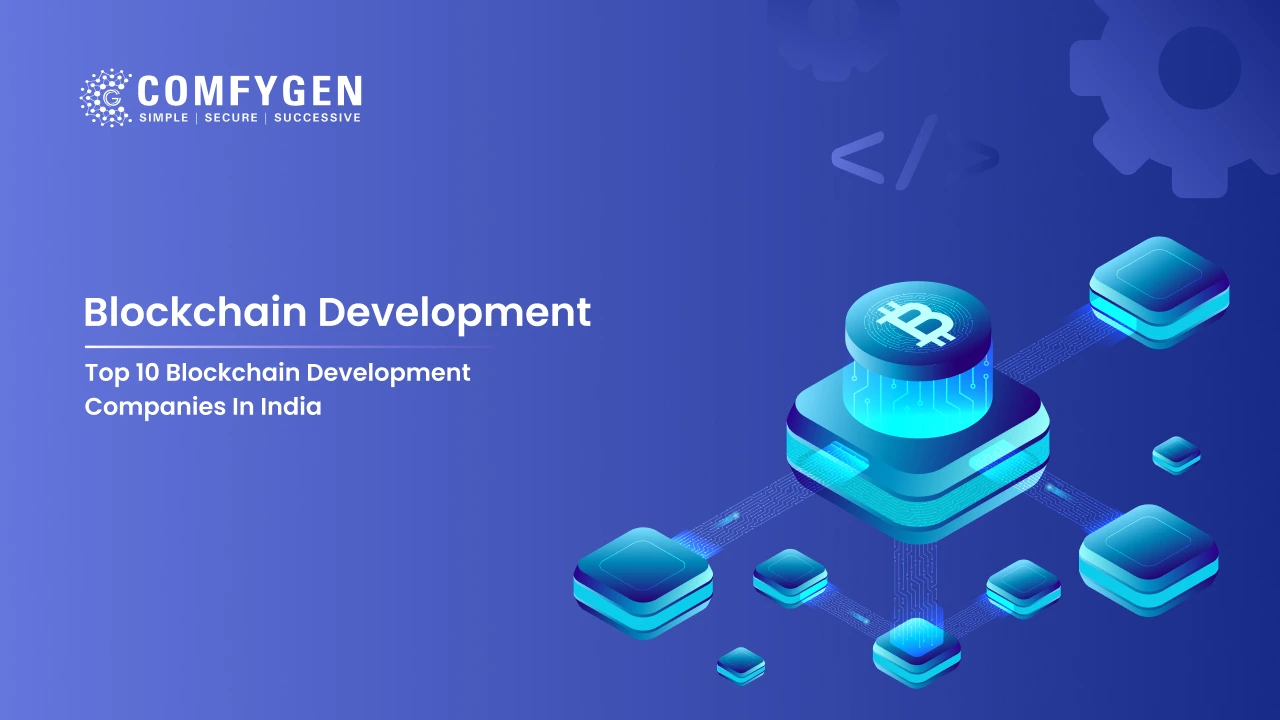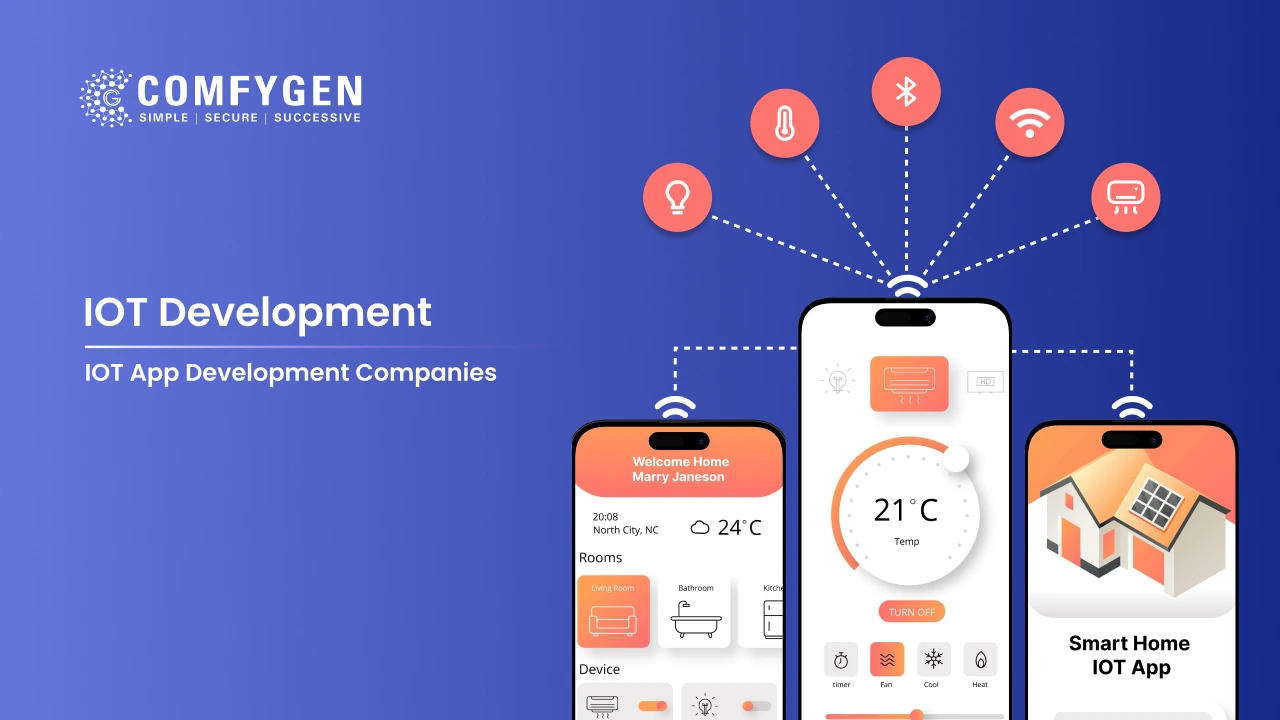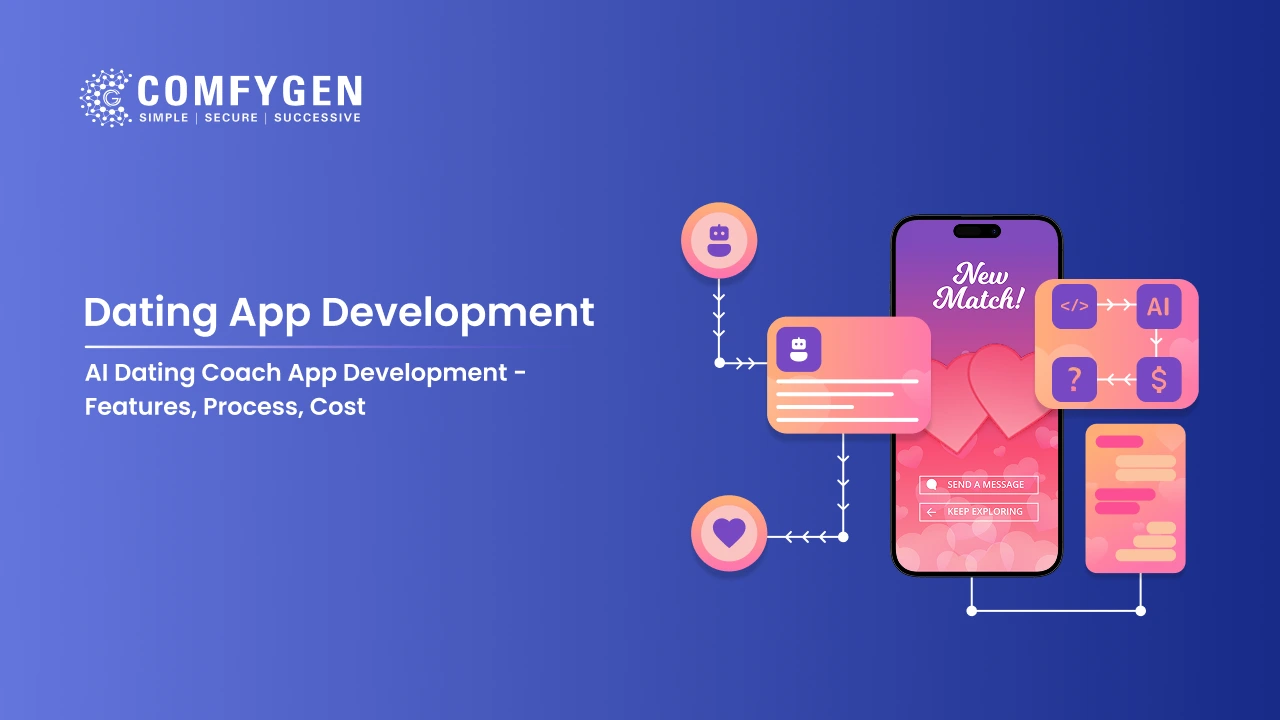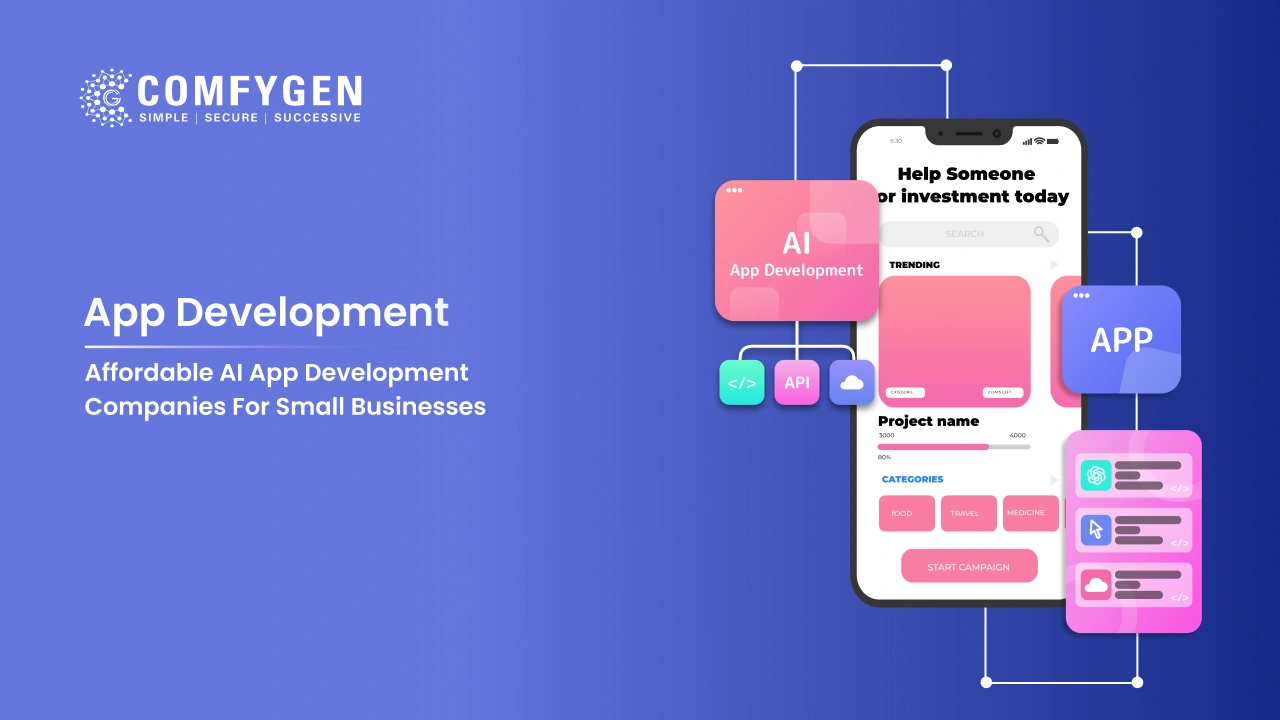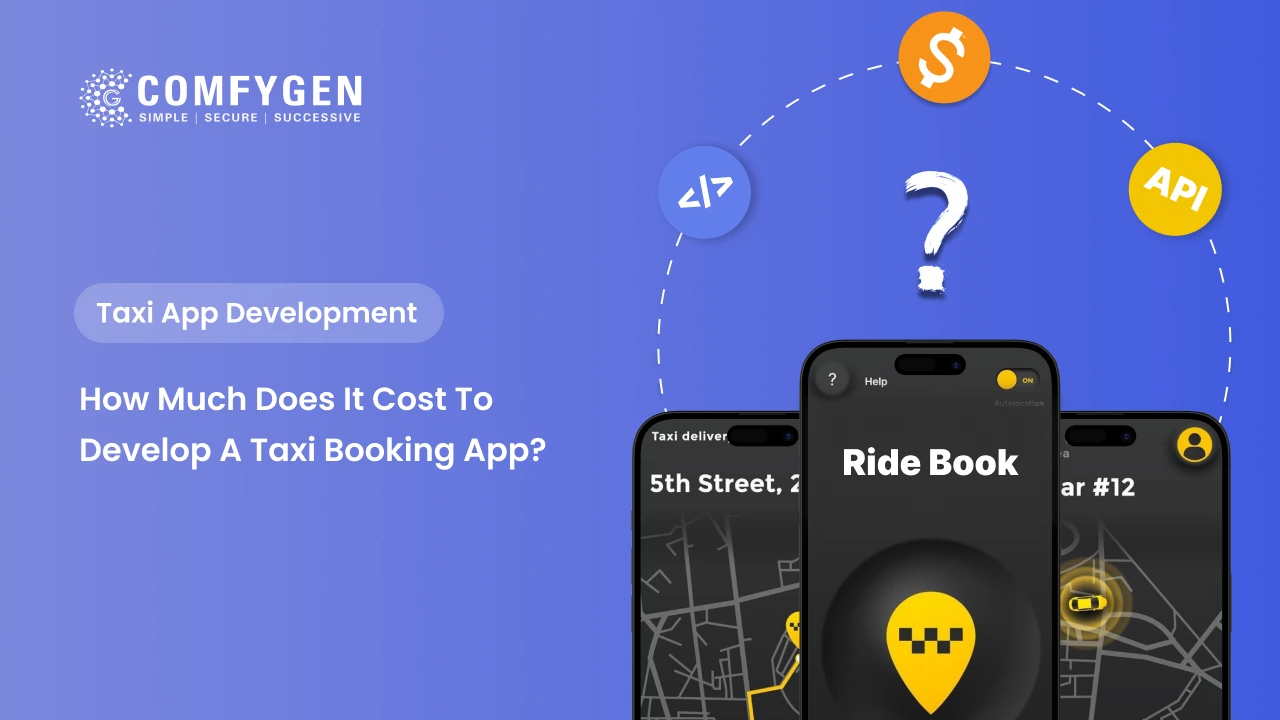A Brief Guide Of Mobile App Development
In today’s digital era, Mobile App Development have become one of the most powerful platforms for businesses. In 2023, mobile apps generated over $500 billion in global revenue, which is expected to exceed $613 billion by 2025. If you haven’t yet taken your business onto a mobile or online platform, you’re missing out on a huge share of potential customers and revenue.
The average mobile user spends more than 4 hours daily on apps, meaning your competitors with mobile apps are connecting directly with your customers, understanding their needs, and boosting their sales. Data also shows that over 90% of businesses have established a mobile presence, significantly increasing their market reach and customer engagement. Not having a mobile app could cost your business a major growth and profit opportunity by 2030, especially as the digital economy rapidly expands.
Thanks to no-code and low-code platforms, app development is now faster and more affordable than ever, enabling businesses of all sizes to launch apps and reach their customers quickly. Not having a mobile app isn’t just a technical gap — it’s a significant competitive disadvantage, allowing your rivals to move ahead and capture your potential customers. By taking your business digital today, you can not only increase your sales and brand value but also future-proof your business for long-term success.
Wondering how to develop a mobile app for your business in 2025? This guide covers everything—from choosing the right platform to hiring developers and ensuring post-launch success.
What is Mobile App Development?
Mobile app development is the process of creating software applications that run on mobile devices like smartphones and tablets. It involves designing, coding, testing, and deploying apps for platforms like Android and iOS to deliver seamless user experiences and solve real-world problems.
Why Mobile Apps Play a Crucial Role in Growing Your Business
Mobile apps enable businesses to connect directly with customers, providing convenience, speed, and personalized experiences. They boost engagement, drive sales, and build brand loyalty, making them a vital tool for digital growth in today’s mobile-first world.
Why a Strategic Approach to Mobile App Development Matters
A strategic approach ensures your app aligns with business goals, user needs, and market trends. It helps avoid costly mistakes, improves performance, and maximizes ROI by focusing on long-term success rather than just quick deployment.
Choosing the Right Mobile App Development Platform for Your Business
Selecting the right app development platform—whether native, hybrid, or cross-platform—can greatly impact your app’s performance, cost, and time to market. Your choice should align with your business goals, target audience, budget, and long-term scalability needs. Making a strategic decision early helps avoid technical debt and ensures smoother growth.
Native vs. Hybrid vs. Cross-Platform App Development
Native: Native apps are built specifically for one platform (iOS or Android) using platform-specific languages like Swift or Kotlin. They deliver the highest performance and best user experience, but require separate codebases.
Hybrid: Hybrid apps use web technologies like HTML, CSS, and JavaScript, wrapped in a native shell, allowing them to run on multiple platforms—but with some trade-offs in performance.
Cross Platform: Cross-platform apps, built with tools like Flutter Development or React Native Development, offer a middle ground—sharing one codebase across platforms while maintaining near-native performance and faster development cycles.
Popular Mobile App Development Platforms: iOS, Android, Web, PWA
Businesses today have various platform choices to reach their audiences—native iOS app development and Android app development, responsive web app development, and Progressive Web Apps (PWAs). Each platform serves unique user behaviors and business goals.
What is iOS Mobile App Development with Examples?
iOS app development involves creating apps specifically for Apple devices using Swift or Objective-C. Examples include Instagram, Uber, and Airbnb, which all offer smooth, native iPhone experiences.
What are Android Mobile App Development Examples?
Android app development targets devices using the Android OS, typically built with Java or Kotlin. Apps like Spotify, WhatsApp, and Amazon serve millions of Android users globally.
What are Web Mobile App Development Examples?
Web app development run in browsers and adapt to mobile screens without needing installation. Examples include Google Docs, Trello Web, and Twitter Lite, offering flexibility across devices.
What are PWA Mobile App Development Examples?
Progressive Web Apps blend web and native features—offline support, push notifications, and home screen access. Examples include Pinterest PWA, Forbes, and Starbucks, which offer fast, app-like web experiences.
What are No-Code and Low-Code App Development Examples?
No-code/low-code platforms enable rapid app creation without deep coding. Examples include internal dashboards built with Bubble, delivery apps created on Adalo, or CRM tools made with Out Systems.
Infrastructure to Develop a Mobile Application
Infrastructure to develop a mobile app includes the foundational technologies, tools, and environments required to support the entire app development lifecycle. This involves backend servers, APIs, cloud services, development frameworks, CI/CD pipelines, and robust testing environments to ensure scalability, security, and performance.
1. Development Platforms
Choose your app type: Native, Hybrid, and Cross-platform
2. Front-End (Client Side)
Design the user interface and app interactions:
- UI Frameworks: Flutter, React Native, Jetpack Compose, SwiftUI.
- State Management: Tools like Redux, Provider, Bloc manage app state.
- Languages: Dart, JavaScript, Kotlin, Swift – depending on the platform.
3. Back-End (Server Side)
Manages data, users, and logic:
- Node.js: Express.js with MongoDB for real-time apps.
- Python: Django or Flask with PostgreSQL for scalable backends.
- PHP & Java: Laravel and Spring Boot for enterprise-grade apps.
- .NET: Use ASP.NET Core with SQL Server.
4. Database Infrastructure
Choose based on your data needs:
- Relational DBs: MySQL, PostgreSQL – structured data.
- NoSQL DBs: Firebase, MongoDB – flexible, real-time updates.
- On-device DBs: SQLite, Room, Core Data – offline use.
5. Cloud Infrastructure
Power your app with scalable services:
- Hosting & APIs: AWS, Google Cloud, Azure.
- BaaS: Firebase, Supabase – skip building backend from scratch.
- File Storage: Amazon S3, Firebase Storage.
- Real-Time DB: Firebase Realtime DB, PubNub.
6. Authentication & Security
Keep your app and users safe:
- Auth Tools: Firebase Auth, Auth0, AWS Cognito, OAuth2.
- Security Practices: HTTPS, input validation, encryption.
- Compliance: Ensure App Store & Play Store guidelines are met.
7. APIs & Integrations
Add powerful features:
- APIs: REST or GraphQL for data.
- Push Notifications: FCM, OneSignal.
- Payments: Stripe, Razorpay, PayPal.
- Maps & Analytics: Google Maps, Firebase Analytics.
8. CI/CD (Continuous Integration/Deployment)
Automate your release process:
- Tools like GitHub Actions, Bitrise, and Codemagic build, test, and deploy apps faster with fewer errors.
9. Testing Infrastructure
Ensure your app works reliably:
- Unit Testing: JUnit, Mocha.
- UI Testing: Appium, Espresso, Detox.
- Manual Testing: TestFlight (iOS), Firebase App Distribution.
10. App Stores & Deployment
Get your app live:
- Android: Google Play Console.
- iOS: Apple Developer Console.
- Prepare builds, add screenshots, privacy policies, and metadata.
11. Monitoring & Performance
Track issues and improve user experience:
- Crash Reporting: Crashlytics, Sentry.
- Performance Monitoring: New Relic.
- User Feedback: Instabug.
Which App Solutions Do You Need According to Your Industry?
Every industry has unique needs, so your app should reflect that. Here’s a quick look at the ideal app solutions by sector:
eCommerce & Retail: eCommerce Development empowers retail businesses with robust solutions like product catalogs, shopping cart systems, secure payment gateways, order tracking, and integrated chat support
Healthcare: Telemedicine apps, appointment booking, e-prescriptions, and health tracking.
Fintech & Banking: Mobile wallets, Mobile Banking, investment tracking, biometric authentication, secure transactions.
Education & eLearning: eLearning platforms, Live classes, LMS, Tutor Booking, eBook Platforms, progress tracking, and multilingual support.
Logistics & Transport: Fleet management, live tracking, route planning, delivery status updates, and Delivery Apps.
Travel & Hospitality: Booking engines, online taxi app, itinerary planners, digital check-ins, reviews, loyalty programs.
Media & Entertainment: Video streaming, news application feeds, podcasting, and in-app purchases.
Fitness & Wellness: Workout tracking, personalized fitness plans, diet coaching, wearable device integration.
Real Estate: Virtual tours, property listings, contact forms, location-based suggestions.
On-Demand Services: Booking systems, real-time GPS tracking, push notifications, payment integration.
Social Media & Dating: Real-time messaging, AI-based matching, privacy settings, and in-app purchases—enhancing user engagement and connection in both social media and dating app experiences.
Emerging Tech Stack for Advanced Mobile App Functionality
- AI Integration for Smart Mobile Apps
Artificial Intelligence powers personalization, chatbots, voice assistants, and predictive analytics, making apps smarter and more intuitive for users. - Data Analysis to Grow Your Mobile App Business
In-app analytics help track user behavior, retention, and performance, enabling data-driven decisions to improve UX and drive revenue. - Blockchain for App Data Security
Blockchain ensures transparency, immutability, and enhanced data protection—ideal for finance, healthcare, and authentication-based apps. - IoT Connectivity with Mobile Apps
IoT integration connects devices to your mobile app, enabling remote control, monitoring, and automation across smart homes, wearables, and vehicles. - AR/VR/MR/XR-Based Apps
Immersive technologies create engaging user experiences—ideal for gaming, training, retail try-ons, real estate tours, and more.
Notable Pointers Before Hiring an App Developer or Development Company
- Define Your App Goals Clearly
Know what problem your app solves, your target audience, and key features before approaching any developer. - Check Experience & Portfolio
Review their past projects, especially in your industry or similar app categories, to assess technical capability and creativity. - Understand Their Development Process
Ask about their project management methodology (Agile, Scrum, etc.), timelines, team involvement, and milestone delivery process. - Assess Communication & Transparency
Ensure they offer regular updates, responsive communication, and clear documentation throughout the development cycle. - Discuss Post-Launch Support
Clarify whether they provide app maintenance, updates, bug fixes, and scalability solutions after deployment. - Verify Technical Expertise
The team should be skilled in the latest frameworks (e.g., Flutter, React Native), backend systems, cloud infrastructure, and security protocols. - Budget & Timeline Alignment
Be realistic about costs and ensure the team can deliver within your desired timeline without cutting corners. - Legal Protection & Ownership
Sign NDA agreements and ensure you retain full ownership of the code, design, and intellectual property.
Industry-Specific Success Stories: How Mobile Apps Drive Growth
Retail & E-commerce App Development
Brands like Amazon and Shopify-powered stores saw mobile app users contributing over 50% of their total sales, thanks to seamless shopping experiences, personalized offers, and easy checkout. Small retailers using mobile apps report up to a 40% increase in customer engagement and repeat purchases.
Healthcare App Development
Telemedicine app development like Teladoc and Practo have revolutionized patient care by enabling virtual consultations, appointment scheduling, and health tracking. Providers using apps see a 25% improvement in patient retention and greater treatment adherence.
Fintech App Development
Fintech app development, including PayPal, Cash App, and various digital wallets, enables millions to transact securely on the go. Thanks to mobile platforms, fintech companies report up to 60% faster user onboarding and a significant increase in transaction volume.
Education App Development
Education App Development and eLearning platforms like Duolingo and Khan Academy engage users globally, offering interactive lessons and progress tracking. Educational apps see a 35% higher course completion rate compared to traditional methods.
Logistics & Transportation App Development
Companies like Uber and DoorDash rely on mobile apps for real-time tracking, efficient dispatch, and improved customer communication. These platforms reduce operational costs by up to 30% while increasing customer satisfaction.
Real Estate App Development
Real Estate Mobile app development enable virtual tours, instant messaging, and easy property searches, improving lead generation by 50% for real estate agencies.
Does Location Matter for App Development Cost or Quality?
Absolutely. Hiring an app development team from different regions can affect your budget, communication, and delivery speed:
- Cost Variation:
- USA/UK/Western Europe: High-quality but expensive (avg. $100–$200/hr).
- Eastern Europe: Balanced quality and cost (avg. $40–$70/hr).
- India/South Asia: Cost-effective with growing expertise (avg. $20–$50/hr).
- Latin America: Affordable with closer time zones for US-based clients (avg. $30–$60/hr).
- Time Zone & Communication:
Overlapping working hours improve collaboration. Choose a team that aligns with your business hours or is flexible with updates and meetings. - Skill Availability:
Some regions have deeper pools of specialists in specific technologies like Flutter, AI, or blockchain. - Cultural & Business Alignment:
Teams familiar with your target market or language make product development smoother.
Choosing the Right Country for Mobile App Development: Cost, Quality & Suitability
When it comes to app development, location plays a major role in determining both cost and quality. Factors such as time zone compatibility, language proficiency, technical expertise, and hourly rates vary by country, and so does your experience as a client.
If you’re on a budget, countries like Mobile App development Cost in India and the Philippines offer skilled mobile app developers at competitive rates in India. For high-end enterprise app development, regions like the Mobile app development in United States or Canada deliver cutting-edge quality, albeit at a premium price. Eastern European countries like mobile app development in Ukraine and Poland strike a balance between cost-efficiency and technical brilliance.
Here’s a list of popular app development destinations worldwide:
| Country | Key Strengths | Approx. Hourly Rate |
| India | Cost-effective, diverse tech stack, English-speaking | $20–$50/hr |
| USA | Top-tier innovation, enterprise-grade quality | $100–$200/hr |
| Ukraine | Strong tech culture, secure coding practices | $40–$70/hr |
| Poland | EU standards, fintech & IoT expertise | $50–$80/hr |
| Philippines | Affordable, strong in UI/UX, and communication | $25–$45/hr |
| Brazil | Nearshore to US, growing tech community | $30–$60/hr |
| Canada | High quality, compliance-focused | $80–$150/hr |
Tip: Choose a location that aligns with your mobile app development budget in India, project complexity, and need for real-time communication. Outsourcing doesn’t mean compromise—it means smart decision-making.
Hiring Model: Freelance Mobile App Developer vs. Mobile App Development Company — What’s Best for Your Next App or Web Project?
Choosing between a freelance mobile app developer and a development company depends on your project scope, timeline, and budget.
- Freelancers are best for small tasks, MVPs, or tight budgets. They offer flexibility but may lack scalability, quality control, or post-launch support.
- App development companies offer full-cycle services, from design to deployment, including QA, DevOps, and long-term support. They are ideal for complex, scalable, or enterprise-level projects requiring team collaboration and structured delivery.
Best for You?
If you’re building a serious app or web platform for growth, a mobile app development company like Comfygen Technologies ensures accountability, expertise, and end-to-end success.
How to Calculate Your Mobile App Development Cost and Time? Save Yourself from Mishap
Estimating the cost and timeline for mobile app development isn’t guesswork—it’s a strategic formula that combines scope, features, and resource rates. Here’s a clear, descriptive way to break it down like a mathematical equation:
1. Basic Cost Of App Development:
App Development Cost = Total Development Hours × Hourly Rate
Let’s break it down:
-
Total Development Hours = Sum of time spent on all features + UI/UX + testing + project management
-
Hourly Rate = Cost per hour of your development team (varies by region and expertise)
2. Total App Development Hours Estimation
You can calculate total development hours using this:
Total Hours = Feature Development + Backend + UI/UX Design + Testing + PM Overhead
Example:
-
Basic features (Login, User Profile, Push Notification): ~200–400 hrs
-
Medium complexity (Chat, Payments, GPS): ~400–700 hrs
-
High complexity (Real-time sync, AI/ML, AR/VR): 800–1500+ hrs
-
Add 15–20% for Testing & QA
-
Add 10–15% for Project Management
3. Cost Based on Region (Average Hourly Rates)
| Region | Avg Hourly Rate (USD) |
| India | $15–$40 |
| Eastern Europe | $35–$70 |
| Western Europe/UK | $60–$100 |
| USA/Canada | $100–$200 |
Example Calculation:
Let’s say your app needs 600 hours and you choose a developer in India at $30/hour:
Total Cost = 600 hrs × $30 = $18,000
4. Time Estimation Formula
App Development Time = Total Hours ÷ Team Size
-
If 600 hours are required and you have a 2-person team (e.g., dev + designer),
600 ÷ 2 = 300 hours per person = approx. 6–8 weeks depending on working hours/week.
5. Extra Costs to Consider
| Item | Cost Impact |
| API integrations | +$500–$3000 each |
| Third-party services (Maps, Auth, Chat) | Monthly fees + setup time |
| App store registration | $25 (Google) / $99/yr (Apple) |
| Maintenance & Updates | ~15–20% of dev cost annually |
Best Tips to Manage Cost Efficiently
-
Build an MVP first: Launch fast with core features, then scale
-
Use no-code/low-code app development: For basic or internal apps, cut dev time by 60%
-
Outsource smartly: Indian firms offer high-quality at competitive rates
-
Avoid scope creep: Define features clearly to avoid budget surprises
-
Set a buffer: Keep a 10–15% buffer for unexpected additions or delays
Pro Tip: Always ask for a detailed scope & timeline before starting. Include buffer time for testing and revisions to avoid unexpected delays or overspending.
Key pointers to focus on when an app development company delivers your app
- Source Code Ownership
Ensure you receive complete and clean source code with documentation. - Bug-Free Functionality
Test the app thoroughly for bugs, crashes, and feature inconsistencies. - UI/UX Consistency
Verify that the final design aligns with your approved wireframes/mockups. - Cross-Platform Compatibility
Make sure the app performs well on all targeted devices and screen sizes. - Admin Panel Access
Get access to dashboards, content controls, analytics, and management tools. - App Store Deployment
Confirm that the app has been properly published on Google Play and/or Apple App Store with all metadata and privacy policies. - Security Implementation
Ensure user data is encrypted and proper security protocols (HTTPS, OAuth, etc.) are integrated. - Performance Optimization
Check for fast load times, efficient data usage, and responsiveness. - Training & Documentation
Request user manuals, admin guides, and training sessions if needed. - Post-Delivery Support
Clarify your support/maintenance period and any upgrade policies.
What are White-Label Apps and Custom App Solutions
White-label apps are pre-built, rebrandable solutions ready to launch quickly, while custom apps are tailored from scratch to match unique business needs and goals.
What is AI, and Why Do You Have to Integrate It with a Mobile App
AI app enhances user experience through automation, personalization, and intelligent predictions, making your app smarter and more user-centric.
Why is Blockchain Important for Your Mobile App? Security Measure
Blockchain app development ensures data integrity, user authentication, and secure transactions, making your mobile app tamper-proof and trust-driven.
What is IoT and How Does It Work?
IoT development connects physical devices to the internet, enabling real-time data sharing and automation through sensors, apps, and cloud systems.
What is AR/VR, and What Are the Benefits of Using It in Mobile App Development
AR and VR create immersive digital experiences that boost engagement, perfect for gaming, retail, training, and real estate apps.
What is SAAS and SAAS-Based Mobile Apps?
SaaS (Software as a Service) apps are cloud-hosted solutions accessible via subscription, offering scalability and easy access across devices.
What Are B2B, B2C Platforms, and Why Are They Important
B2B platforms serve businesses, while B2C targets consumers. They streamline sales, support, and engagement depending on your audience.
Challenges and How to Overcome Them
Common challenges include scalability, security, and market competition—overcome them with proper planning, tech expertise, and agile development.
Tips for Choosing the Right Indian App Development Partner
Look for proven experience, technical skills, transparency, and strong communication to ensure successful collaboration.
Why India is the Best Location for Mobile Apps and Software
India offers skilled developers, cost-effective services, and a strong tech ecosystem—making it ideal for global app development.
Top Indian Cities for Mobile App Development
- Jaipur: Rising startup hub
- Bengaluru: India’s Silicon Valley
- Hyderabad & Pune: Known for tech innovation
- Gurugram & Ahmedabad: Business-focused development
- Chennai: Home to top IT talent
Popular App Development Services Offered in India
Services include native and cross-platform apps, UI/UX design, API integrations, custom software, AI/ML, and enterprise mobility solutions.
How to Choose the Right Mobile App Development Partner in India
Assess portfolio, client reviews, tech stack, and development process to find a trustworthy Indian partner.
What to Look for in an Indian Development Company
Prioritize domain expertise, scalable teams, transparent pricing, post-launch support, and NDAs to protect your idea.
Future of Mobile App Development in India
India will lead in AI, AR/VR, blockchain, and low-code tech adoption, delivering faster, smarter, and secure apps at scale.
How Much Does It Cost to Develop an App in India?
Basic apps may cost $5,000–$15,000, while complex enterprise apps can range from $20,000 to $100,000+ depending on features.
What Industries Do Indian Developers Specialize In?
Indian firms serve healthcare, fintech, eCommerce, education, logistics, real estate, and on-demand service platforms.
How Do I Protect My App Idea When Outsourcing to India?
Use NDAs, IP protection clauses, and trusted partners to secure your app concept from leaks or misuse.
Tech-Driven Services for Mobile App Development
India’s app developers offer cutting-edge services in AI, AR/VR, blockchain, cloud, IoT, and no-code/low-code tech stacks.
Artificial Intelligence (AI) in Mobile Apps
Artificial Intelligence (AI) brings intelligent automation, smart decision-making, and personalized experiences, transforming how users interact with your app.
AI-Powered Chatbots & Virtual Assistants
AI chatbots and assistants offer instant support, streamline customer service, and boost engagement through 24/7 intelligent communication.
Machine Learning (ML) in Mobile App Development
ML enables apps to learn from user behavior, adapt over time, and provide tailored suggestions, improving overall functionality and retention.
Augmented Reality (AR) and Virtual Reality (VR)
Augmented Reality (AR) and Virtual Reality (VR) create immersive, interactive experiences that redefine how users visualize, shop, learn, or play through mobile apps.
For e-commerce and retail apps, AR allows users to try products virtually, visualize furniture, or preview looks—leading to increased conversions and fewer returns.
VR in Gaming and Training Apps
VR delivers engaging simulations in gaming, training, and education by placing users in controlled, realistic 3D environments.
Blockchain Technology in Mobile Apps
Blockchain ensures transparency, data integrity, and decentralization, making mobile apps more secure and tamper-proof.
For healthcare app development, blockchain secures transactions, streamlines identity verification, and protects sensitive data.
Smart Contracts and Decentralized Apps (DApps)
Smart contracts automate agreements without intermediaries, while DApps offer trustless, decentralized alternatives to traditional apps.
NFT and Crypto Wallet App Development
NFT and Crypto Wallet App Development services help build secure platforms to manage NFT and cryptocurrencies, enabling digital ownership, trading, and blockchain-powered finance features.
Internet of Things (IoT) in Mobile Apps
IoT-powered mobile apps enable users to connect and control smart devices remotely, offering real-time monitoring, automation, and enhanced convenience. From smart home systems to industrial IoT applications, these apps improve productivity, optimize energy usage, and provide advanced control capabilities across various environments.
Wearables and Sensor-Based Integration
Apps for smartwatches and fitness bands gather real-time data on health, location, or movement for personalized services.
Cloud-Based Mobile App Development
Cloud apps offer flexibility, scalability, and fast deployment by storing and processing data on secure remote servers.
Cross-Platform Mobile App Development
Build once, deploy anywhere. Cross-platform development saves time and cost by targeting both iOS and Android with a single codebase.
Custom Mobile App Development
Custom Mobile App Development delivers tailor-made solutions that address your unique business needs, enabling seamless user experiences and scalable growth.
UI/UX Design and Prototyping
UI/UX Design and Prototyping ensure intuitive interfaces and smooth user flows. Great design drives engagement, while prototypes help refine the journey before development.
Why India Remains the Top Destination for IT-Based Mobile App Development
India offers a rich talent pool, cost-effective services, and globally trusted IT expertise, making it the go-to hub for mobile app development.
No-Code and Low-Code App Development
Simplifies the app creation process through visual builders and pre-built modules, significantly reducing time-to-market.
No-code – uses drag-and-drop tools, enabling non-programmers to build fully functional apps without writing any code. On the other hand.
low-code – allows partial coding, making it ideal for IT teams that want to accelerate complex builds while retaining control and customization.
Together, these approaches empower both technical and non-technical users to bring app ideas to life efficiently.
Key Use Cases and Applications
No-code/low-code shines in building internal tools, MVPs, customer portals, eCommerce apps, and process automation solutions.
MVP (Minimum Viable Product) Development
Build and launch a basic yet functional version of your app fast—perfect for testing market demand with minimal resources.
Internal Business Tools and Workflows
Streamline operations with custom CRMs, dashboards, and workflow automation tools built with low-code/no-code platforms.
E-commerce and Marketplace Apps
Quickly launch scalable online stores or service marketplaces with features like payment integration, inventory tracking, and user management.
On-Demand Service Apps
Build Uber-like apps for delivery, home services, or healthcare with instant booking, tracking, and user interaction capabilities.
Event and Booking Management Apps
Enable smooth ticketing, scheduling, and attendee tracking through customizable apps built for conferences, salons, or hospitality services.
Educational and eLearning Platforms
Build engaging learning experiences with features like quizzes, progress tracking, video lessons, and student dashboards—no-code/low-code makes it fast and cost-effective.
Popular No-Code and Low-Code Platforms
Explore leading tools that simplify app development and reduce dependency on full-scale coding.
No-Code Platforms: Bubble, Adalo, Glide, Thunkable, Softr
These platforms offer drag-and-drop interfaces to build responsive web and mobile apps without any coding skills—ideal for startups and educators.
Low-Code Platforms: OutSystems, Mendix, Microsoft Power Apps, Appgyver, Zoho Creator
Low-code tools support rapid app development with some coding flexibility, making them suitable for enterprise-grade applications.
When to Choose No-Code/Low-Code
Choose these methods when speed, budget, and prototyping are priorities—perfect for MVPs, internal tools, or time-sensitive projects.
Industries Benefiting from No-Code/Low-Code Solutions
Sectors like Healthcare, Fintech, Real Estate, Retail, Education, and Logistics are adopting these platforms for quicker digital transformation and reduced IT costs.
Limitations and Challenges
While powerful, no-code/low-code platforms do come with some trade-offs.
Platform Dependency (Vendor Lock-In)
Relying on a specific platform can limit your flexibility and increase long-term costs—careful selection is key.
Performance and Scalability Issues
These platforms may struggle with high-load or complex apps, especially when traffic and data grow rapidly.
Security Concerns
Apps built on third-party platforms must be evaluated carefully for data privacy and compliance risks.
Limited Customization in Complex Apps
Customization beyond core templates can be difficult, especially when your app requires unique business logic or integrations.
Compliance and Data Control
Industries with strict compliance requirements must assess whether the platform supports necessary data controls and localization.
How India is Becoming a Hub for No-Code/Low-Code Development
India is rapidly emerging as a global leader in no-code/low-code services due to a skilled, cost-efficient workforce and growing tech infrastructure.
Growing Adoption by Indian IT Companies
Top Indian software firms are incorporating no-code/low-code to deliver faster results and improved ROI for clients.
Skilled Workforce Trained in Modern Tools
Indian developers and designers are rapidly adopting tools like OutSystems, Glide, and Mendix, offering world-class solutions.
Cost-Effective No-Code/Low-Code Services
India offers unmatched affordability in development without compromising on quality or innovation.
Collaboration Between Business and IT Teams
Indian teams focus on tight collaboration, ensuring business goals are met efficiently through agile and transparent workflows.
Customizing and Extending No-Code/Low-Code Apps
Even no-code apps can be extended with APIs, plugins, and custom code to meet your evolving business needs.
Using APIs and Third-Party Integrations
Enhance app functionality by seamlessly connecting to payment gateways, CRMs, analytics tools, and more.
Adding Custom Code for Unique Features
Additionally, low-code platforms allow custom scripts to be injected—bridging gaps when templates alone aren’t enough.
Connecting with Databases and Backend Systems
Build scalable apps that pull and push data across enterprise systems using REST APIs, SQL, and secure connectors.
No-Code/Low-Code Development for Startups
Moreover, startups benefit from quick MVP rollouts and low upfront costs, helping them test ideas before full-scale investment.
No-Code/Low-Code Development for Enterprises
Enterprises use these platforms to build internal apps, automate workflows, and accelerate digital transformation.
Future of No-Code and Low-Code Development
With growing AI integration and better customization, no-code/low-code is set to revolutionize how businesses build software.
Integration with AI and Automation
Modern platforms now support AI features like smart forms, chatbots, and predictive analytics to improve app intelligence.
How to Choose the Right No-Code/Low-Code Development Partner
Look for teams with proven experience, strong UI/UX skills, platform expertise, and the ability to extend solutions beyond templates.
Is No-Code/Low-Code What is Right for Your Business?
Therefore, if your goals include rapid launch, budget control, and iterative testing, no-code/low-code is likely a perfect fit for your app vision.
FAQs
Choose custom apps for unique needs and scalability; opt for white-label when you need faster time-to-market with minimal customization. Yes, no-code platforms like Adalo, Glide, and Bubble allow users to build apps using visual interfaces without writing code. Trends include AI personalization, voice-enabled apps, 5G integration, AR shopping experiences, and blockchain for security.How much does it cost to develop a mobile app in 2025?
What are the essential features for a successful mobile app today?
What is the step-by-step mobile app development process for beginners?
What is the best approach to validate a mobile app idea before development?
How do I choose between a custom mobile app and a white-label app solution?
What technologies should I use to build a future-ready mobile app in 2025?
How can I reduce the time and cost of mobile app development without compromising quality?
What is the difference between cross-platform and native mobile app development?
Can I build a mobile app without any coding experience?
What are the top mobile app trends businesses should follow in 2025?

Mr. Saddam Husen, (CTO)
Mr. Saddam Husen, CTO at Comfygen, is a renowned Blockchain expert and IT consultant with extensive experience in blockchain development, crypto wallets, DeFi, ICOs, and smart contracts. Passionate about digital transformation, he helps businesses harness blockchain technology’s potential, driving innovation and enhancing IT infrastructure for global success.
Based on Interest

Create a Crypto Token for Your Business with Blockchain Technology
Blockchain technology evolution is transforming every industry with its secure parameters, transparency, and interoperability. Additionally, the tokenization market is growing from $2-3…

